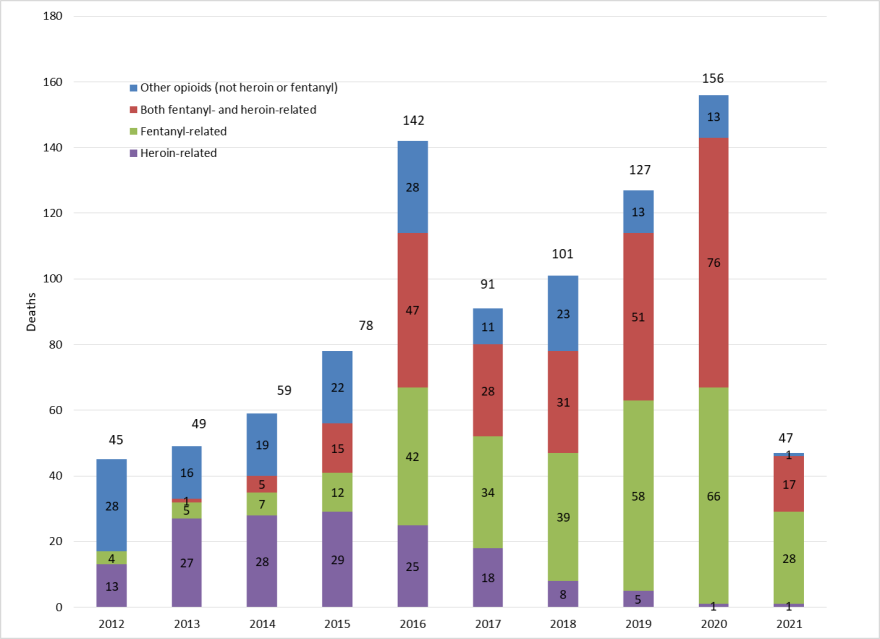Last year, Onondaga County had more fentanyl and fentanyl with heroin-related deaths than any other year, going back nearly a decade. The numbers are continuing to climb, as health officials say fentanyl is being put into a variety of other substances.
Mariah Senecal-Reilly, the substance-use program coordinator with Onondaga County said they’re seeing fentanyl in not just heroin, but also cocaine and methamphetamines.
“It’s reaching a population that may not have previously encountered it, so it’s putting a greater number of people at risk,” Senecal-Reilly said.
In the first quarter of 2021, the county had about 40% of the total number of fentanyl-related deaths for all of 2020. Fentanyl is added to heroin and other drugs because it’s cheaper and stronger.
“What I hear is that it is in anything that it can be in,” Senecal-Reilly said. “Because it is so much more potent, it really increases the risk of a serious overdose.”
Senecal-Reilly said they suspect COVID-19 also made addiction more difficult with high unemployment rates, social isolation and the disruption of in-person treatment and support services. The county health department is using several strategies to address this other pandemic, focusing on prevention, Naloxone training, which can reverse an overdose, and recommending physicians revise prescribing practices. The area’s treatment system includes 24-hour access to Helio Health and medication-assisted treatment at Upstate and Crouse hospitals, before someone goes to a clinic.
Senecal-Reilly also emphasized that if you’re concerned about someone experiencing a substance-use disorder, the best thing you can do is love and support them in whatever their recovery looks like.
“We recommend always trying to help people to connect to the available supports and treatment resources and have Naloxone on hand, in the case of emergency,” she said.








